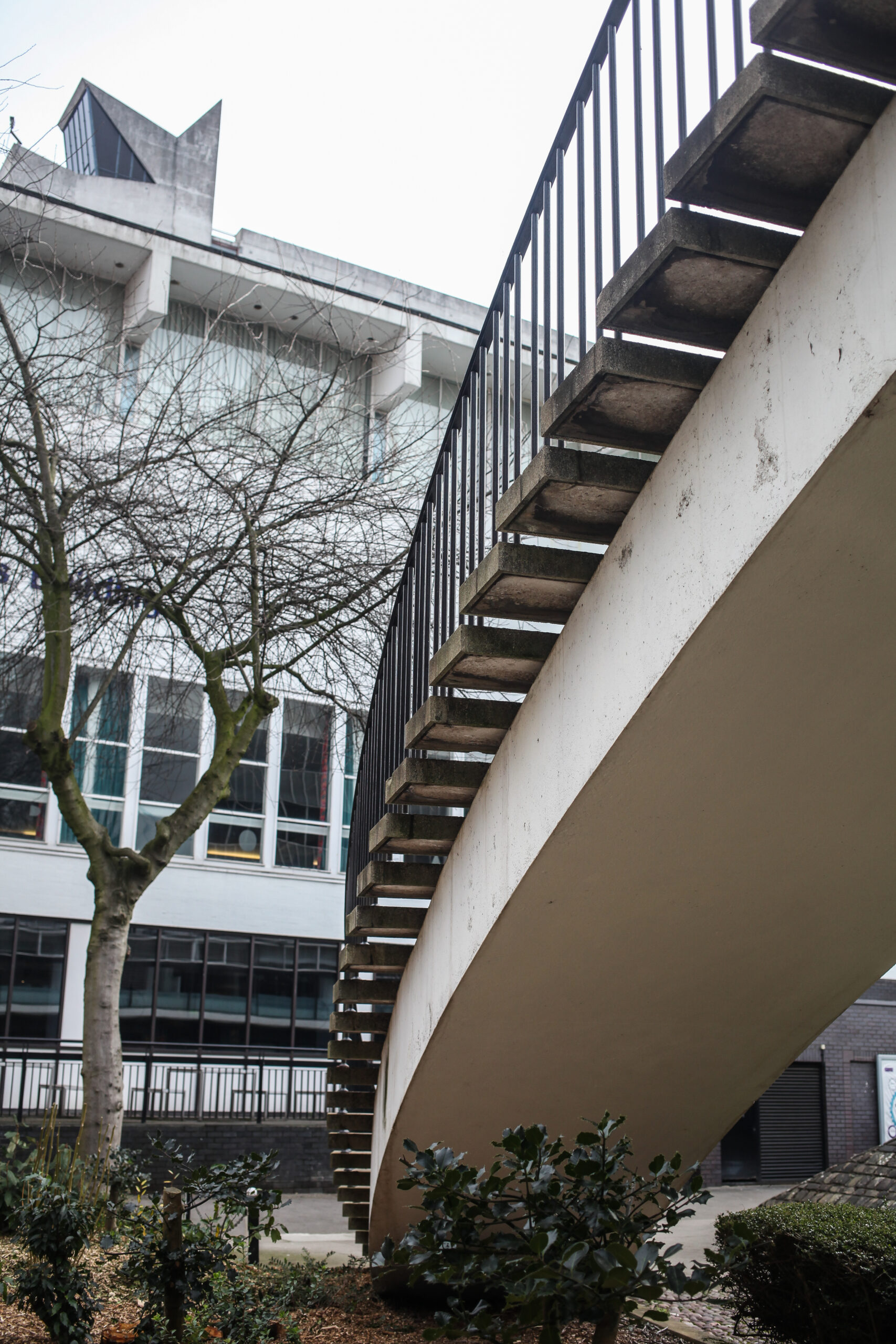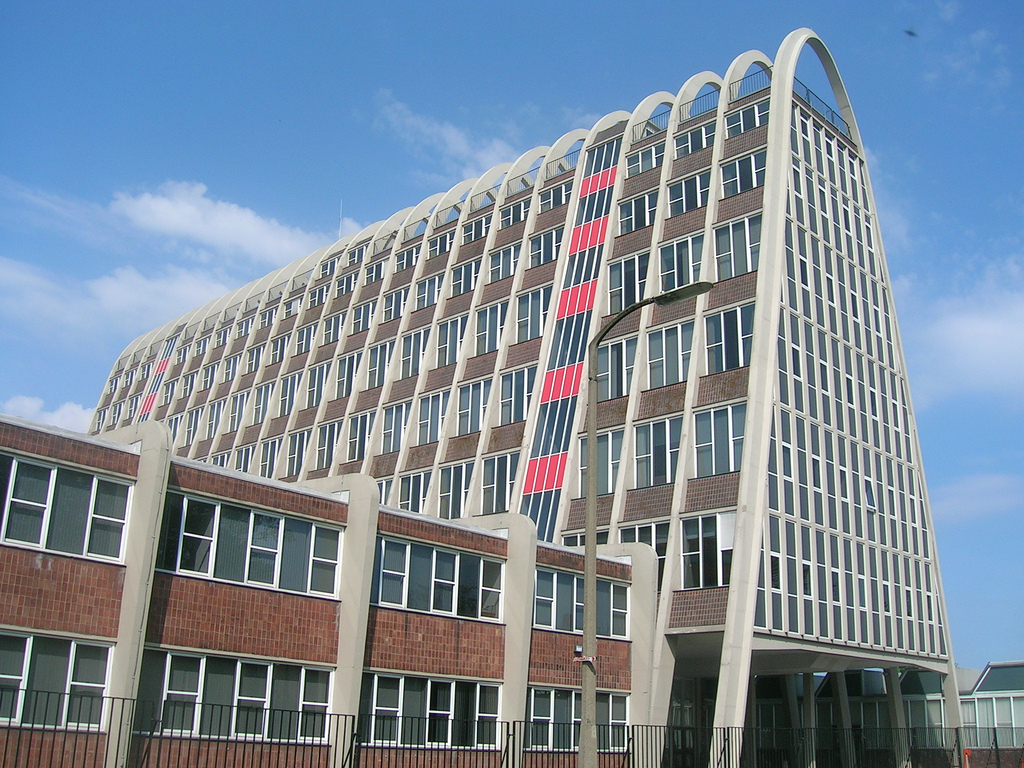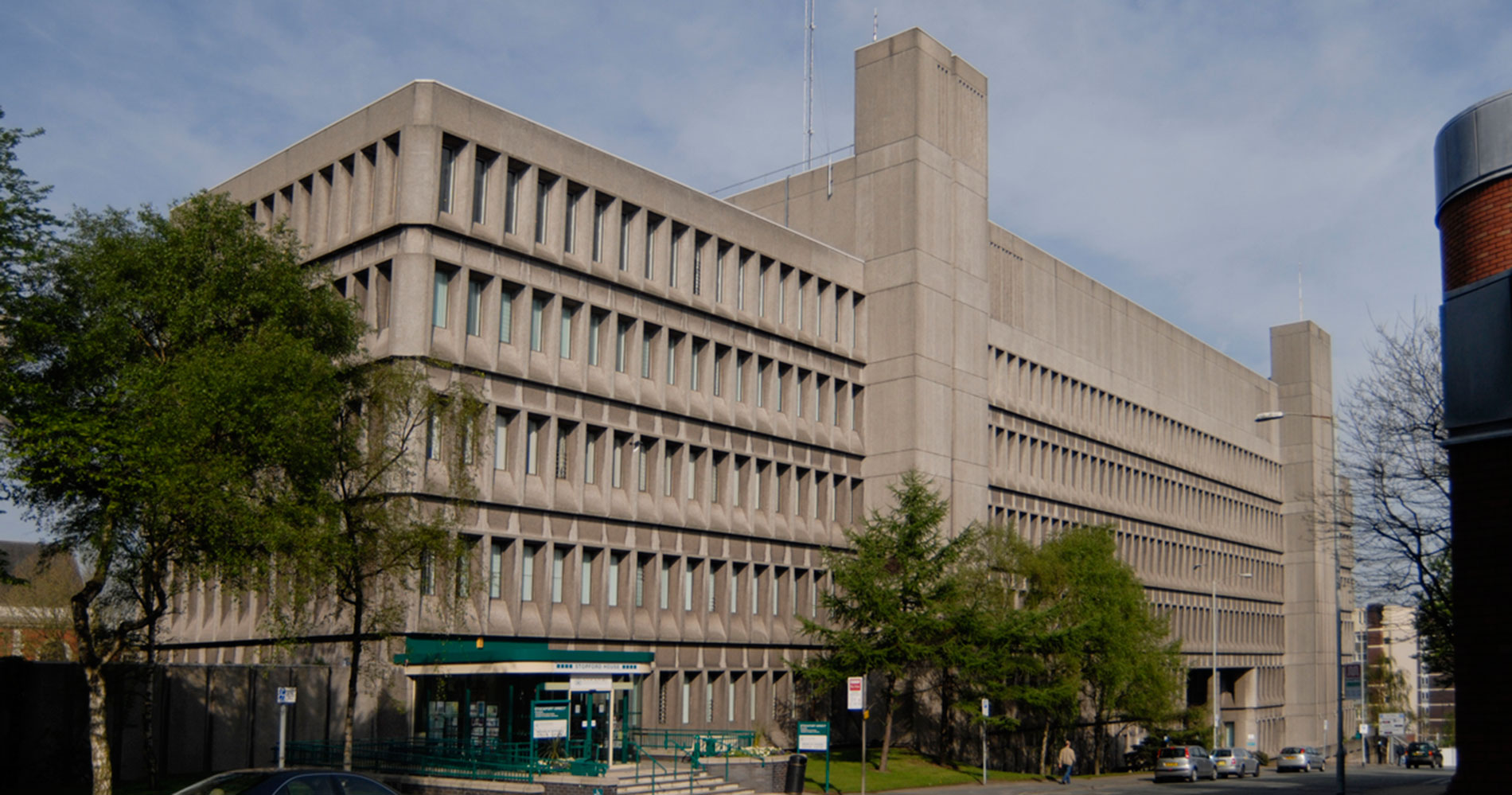I’ve always been a secret admirer of many of Manchester’s most hated buildings, and if I’m being completely honest with you, a small part of my soul dies every time I see plans for another glass-fronted, paint-by-numbers building in the city.
A recent article in the Guardian, examining the region’s best examples of Brutalist architecture and the risks that many are currently facing in being demolished, prompted me to explore Manchester’s best, and strangely most beautiful examples.
Before all that though, I think it’s important to examine just exactly what ‘Brutalism’ means and where it comes from. It’s a rather common misconception that the term “Brutalist” comes from the word “BRUTAL” and all of the connotations that the word invokes.
Instead, it comes from the French “Béton brut” which translates into “raw concrete” and was first associated in architecture with Swiss-born architect Le Corbusier, the man responsible for re-introducing the lost art of concrete back in the late 1940s.
He was a main proponent of seeing raw concrete not as a material to be hidden from view within the buildings’ inner workings but as its visible face, and a demonstration of how the building is formed.
In a post-war landscape in the UK, one which had seen large areas decimated by German bombings, as well the large-scale demolition of slum housing, Brutalism was enthusiastically favoured amongst young planners and architects who were looking to rebel against traditional forms of architectural grandeur.
The style spread throughout the world, but it’s in the UK, in particular poor or working-class areas where Brutalism took hold, where socialist principles came to influence the design of utilitarian, low-cost social housing and civic buildings.
There are still plenty of examples standing today in Manchester and the surrounding region, however, many have, unfortunately, been forgotten – a product of a time which many believe to be a dark spot on the progression of architectural design.
Well, I’m a big fan, and as a result I’m looking to present to you the city’s most beautiful Brutalist gems. First on the list is slap-bang in the city centre, and is probably one of the first buildings visitors to Manchester see – Piccadilly Plaza.
A huge 1960s concrete monstrosity, Piccadilly Plaza comprises an impressively large and long angular glass-fronted tower, complete with ‘wings’, which all rests atop a wide, flat base that houses offices, conference rooms and even a bar – perfect for watching people dance at a wedding on a Saturday night whilst waiting for the tram.
Another major brutalist addition to the area was City Tower and its iconic north-facing wall with concrete tiles designed to look like circuit boards.
Just down Aytoun Street from Piccadilly Gardens you’ll eventually reach the old UMIST Campus, one of the UK’s last remaining Brutalist gems and a perfect example of the movement’s dominance during the 50s and 60s.
A plan by Manchester City Council released in 2017 furthered plans to demolish and ‘re-furbish’ the campus, effectively destroying some of the finest examples of post-war architecture in the city – with even Johnny Marr wading in to defend the structures.
A particular favourite here is the stunning Renold Building, which, when it was completed in 1962 was the first building of its type in the UK – “an entire building to house both lecture theatres and seminar rooms… as well as one of the earliest UK projects to assume a tower and podium configuration.”
It’s most commonly remembered though due to the much-admired Zig-Zag curtain wall on the outside of the building, as well as its innovative curved roof and Victor Pasmore mural.
A smaller Brutalist gem is located just a short walk from the Renold Building, set on the edge of the slowly decaying campus – the so-called Hollaway Wall. It’s a kind of concrete art piece, co-designed by the artist and sculptor Anthony Hollaway who was responsible for the stained-glass windows at Manchester Cathedral.
Over the years the University campuses of the city have been torn down and replaced with modern glass-fronted examples, effectively relegating a wealth of Brutalist gems to the pages of history. Who can (or would want to) forget the imposing, bizarre Mathematics Tower on Oxford Road? Not me, not ever.
Sticking with University buildings, a short trip through Rusholme and you’re greeted with one of the city’s most iconic examples – MMU’s Hollings Campus – most commonly referred to as ‘The Toast Rack’.
Again currently empty, the Toast Rack Building certainly divides opinion, with even A.E.Henshall, former Educational Secretary of the National Union of Teachers declaring it an “architectural monstrosity“, a claim vigorously countered by the building’s admirers.
Nicholas James from the city’s brilliant Modernist Society proclaimed ““The Toast Rack has to rank as Manchester’s most unusual and audacious building, and… it is also a much-loved, beautiful and irreplaceable one.”
There are many other examples further afield of truly magnificent Brutalist architecture, from a Grade-II listed Bus Depot strangely located in the middle of the Sharston Industrial Estate, Wigan’s Civic Centre and the outstanding Stopford House in Stockport – used as the police station in the TV series ‘Life on Mars’.
No mention of Brutalism in Manchester would be complete without talking about the city’s biggest concrete structure – the Mancunian Way. Yep, people out there actually rather admire the structure for its design, and strangely enough it was even awarded the 1968 Concrete Society Award for its clever use of two complementary types of concrete.
The last three decades haven’t been too kind to Brutalism, but recent movements have started to fight back against the hate – with campaigns including the #SOSBrutalism movement enjoying a surge in popularity on social media – helping to change the rather depressing image of the architecture into something more progressive and, strangely, beautiful.
If you’ve found yourself moved or encouraged by these examples, I suggest you get in touch with The Modernist Society, they love it all too. You can follow them below…













